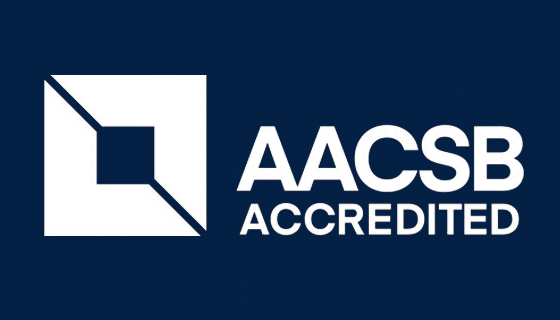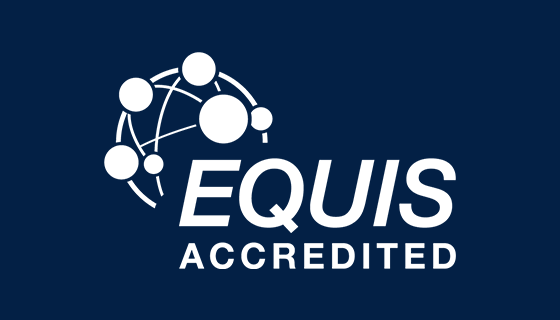3 Terms + Capstone Project
Master in Finance Program
Program
The Master in Finance is developed to enhance the participants’ understanding of financial mechanisms.
The program is offered on a full-time basis and consists of two (fast track) or three (regular track) academic semesters followed by an internship or master thesis semester. The second part of the third semester is delivered in an asynchronous mode so students can start their capstone project in early September of the second academic year.
The program is built on two specialization tracks: Financial Analysis (Track 1) and Banking, Capital Markets & Financial Technology (Track 2). The program’s curriculum is based on core courses and specialization track courses that rely on block course modules. Upon the completion of core courses, students choose their career path through uniquely designed specialization tracks. Students of this program benefit from essential certifications; Bloomberg certification, CFA and CISI.
The program provides students with a wide spectrum of training to prepare the future financial leaders in financial analysis, financial technology, banking, risk management and capital markets. The program offers courses to help them gain a better understanding of advanced topics in finance, including machine learning, financial modelling, risk analytics and artificial intelligence for finance.
Throughout the program, our students are well equipped and ready for the industry through the coursework on the ethics of finance, sustainability, financial regulation and compliance.
Program structure
IÉSEG’s Master in Finance is designed for students who are eager to live a multicultural and international experience, and offers two different tracks based on participants’ academic background:
> Fast Track: Participants who have 4 years of higher education (4-year Bachelor, Master or “M1” validated by an official degree equivalent to at least 240 ECTS credits) may request exemption from the 3rd term.
> Regular Track: for all participants. Mandatory for participants who have 3 years of higher education (Bachelor in 3 years, Licence/”Bac+3″) validated by an official degree equivalent to 180 ECTS credits.
> IÉSEG reserves the right to admit candidates with a 4-year degree into the regular track depending on the quality of their application.
> Due to a bilateral agreement between India and France, Indian students are required to take the regular track, regardless of the length of the Bachelor’s degree obtained.

Course Content
The program is offered on a full-time basis and consists of 3 consecutive terms of courses followed by a professional experience.
ECTS
Quantitative Methods and Financial Mathematics
Financial Econometrics
Portfolio Management
Introduction to Financial Markets
Debt Markets and Fixed Income Securities
Derivatives
International Finance
Ethics and CSR in Finance
Sustainable Finance
Financial Accounting
Financial Statement Analysis
Economics for Corporate Decisions
Data Visualization with Power BI
Corporate Finance
Mergers and Acquisitions
Firm Valuation
Business Game
Python for Finance
Active Portfolio Management
Credit Risk Management
Private Equity
Advanced Firm Valuation
Alternative Investments
Private Wealth Management
Investment Banking
Banking and Financial Intermediaries
Banking Simulation
Financial Regulation and Compliance
Advanced Derivative Securities
Market Risk Analysis and Management
Advanced Asset Management and Factor Investing
Capital Markets and Investment Simulation
Computational Thinking
Advanced Programming with Python
Machine Learning for Finance
Connected Vision Tour – Hackathon
Blockchain for Business
Artificial Intelligence for Capital Markets
Advanced Machine Learning for Finance
Data Analytics for Risk and Asset Allocation
The Trading Desk: Key Tools to Trade in Global Markets
The course is designed to immerse students into the daily life of business consultants working for an ERP implementation company. Through interactive lectures, group assignments, and the intervention of four expert professionals, this course confronts students with the diverse expectations, tasks, and challenges functional consultants need to tackle. Combining theoretical concepts with hands-on exercises on a hypothetical business case, participants are expected to acquire knowledge on and experience with ERP deliverables and domains (i.e., Microsoft Dynamics 365), workflow design for top-level business processes (i.e.., Procure-to-Pay, Order-to-Cash), project management activities, and functional consulting analysis tools (e.g., XMind, Bizagi).
*(2 courses to be chosen among “Business Consultancy in a Digital Environment”, “Leading for Creativity and Design Thinking” or “Strategic People Management”)
Creativity is one of the critical components of an organization’s ability to survive and thrive in today’s competitive and dynamic markets. This course will provide participants with a rich understanding of how creativity can be facilitated and managed in a work setting. They will acquire knowledge regarding various theoretical conceptualizations (i.e., how do you define creativity), antecedents (i.e., what makes you and others more creative) and outcomes (i.e., what is the impact) of creativity as well as knowledge on design thinking techniques and tools to lead teams in the creative journey.
How do creative ideas happen? How can we foster our creativity and the creativity of those around us? What are the paths of creative development of individuals who are successful in their creative endeavours? What are the implications for fostering and managing creativity in the workplace? What are the obstacles to creativity? What is the nature of creativity in teams and organizations? These are some of the questions we will address. During the course, a variety of teaching and learning techniques will be used to enable participants to think critically and imaginatively about various perspectives of creativity. To realize the goal of a shared learning experience between participants and the instructor, the course is aimed at integrating real challenges and practical experiences of creativity, projects, presentations, experiential exercises, and critical reflection on the various course materials.
*(2 courses to be chosen among “Business Consultancy in a Digital Environment”, “Leading for Creativity and Design Thinking” or “Strategic People Management”)
Description to come.
*(2 courses to be chosen among “Business Consultancy in a Digital Environment”, “Leading for Creativity and Design Thinking” or “Strategic People Management”)
Our Career Program helps participants to establish their professional career plan by working on their skills, personal strengths, and using networking tools to be prepared to meet recruiters’ expectations internationally.
At the end of the course, students should be able to:
Build a professional career plan;
Identify personal skills and accumulated experiences (e.g., Master experience);
Adapt professional tools (e.g., CV, LinkedIn) to the local market;
Develop an accurate representation of their professional profile;
Use personal networking to better identify professional opportunities;
Gain insight into techniques and tools to find a job or an internship in France or abroad;
Build self-awareness of personal vocations and interests.
This course provides participants with a profound understanding on entrepreneurship, new business development, and business plan writing. Through lectures, testimonials, field-work, and group assignments, participants are confronted with the how, where, when, whom, and why of starting and developing new business activities. As part of an international and multicultural team, participants are invited to work on an operational business plan aimed at either the creation of a new venture (NVC-track) or the acceleration of new business for an already established SME (NBD-track). This course’s ambitions thus go beyond providing theoretical insights. Hands-on experience is gained through out-of-class field work covering all steps of the entrepreneurial decision-making process (e.g., idea generation, feasibility analysis, industry study, market analysis, marketing plan, production plan, product development, and financial statements). In doing so, participants accumulate entrepreneurial knowledge and behaviours that support innovative solutions and new value development.
French language lessons for all levels are included in the program for international students. French is the mandatory choice for all non-French speaking students.
For French speaking students, other languages will be offered, and credited as well (Chinese, Spanish, German – list subject to change).
Capstone Project: 4-to 6-month internship or work experience anywhere in the world. Alternatively, students can opt for a consulting project or a thesis.
Please note that courses are subject to change; please check with the local contact if you have any questions.

Zoom on… the two specializations
Our program offers two distinct specializations, allowing students to tailor their studies to career path:
> Specialization in Financial Analysis
The financial analysis track focuses on the corporate finance pillar, equipping students with advanced technical skills necessary for in-depth financial analysis, corporate valuation, and strategic financial decision-making. The track prepares students for roles such as financial analysts, corporate finance advisors and financial managers.
> Specialization in Banking, Capital Markets, and Financial Technology
Our banking, capital markets and financial technology specialization targets the dynamic sectors of banking and capital markets, integrating the latest advancements in financial technology. The specialization prepares students for careers and leadership positions in investment banking, trading, financial technology and capital markets. The graduates acquiring this unique specialization aim at working at leading international financial institutions and organizations.
Students choose the specialization best suited to their career goals at the end of the first semester of joint courses.

Workshops and Corporate Events
Alongside the courses, the program includes various workshops and corporate events to further develop your personal and professional skills. These cover a range of topics, such as conflict management in cross-cultural environments and intercultural communication.
Our Career Program helps participants to establish their professional career plan by working on their skills, personal strengths, and using networking tools to be prepared to meet recruiters’ expectations internationally.
INTERNSHIP
During their internship, students are able to combine theories of management with hands-on experience and apply the cross-cultural skills they have developed at IÉSEG.
Business Development Intern, Depositary Analyst, Financial Analyst, Financial Risk Manager, Operation Analyst, Research Content Manager, Risk Management Specialist, S&M Controlling Intern, Strategy & Corporate or Talent Acquisition Partner for example: the internship opportunities offered by the program at the end of the curriculum are multiple.
Some companies which hire our interns: Audi, DataYes, advinda Investor Cloud, Industrial Securities Co.Ltd., Huajing Securities, Bank of America Merrill Lynch, Quilvest Asset Management S.A., Langham Hall, Alter Domus, Thomson Reuters, Amundi Asset Management, etc.
The internship can be undertaken in France or abroad. Most students have done their internships in Asia, in Europe, in Africa or in South America for example.
Corporate involvement in the program
Companies are an integral part of the academic life of the Specialised Master. Throughout the program, students have the opportunity to meet and network with companies of all sizes on topics related to the master, such as conferences, in-class interventions, challenges or tailor-made recruitment. Partnerships may vary from one to another and new opportunities may be proposed according to needs and availability.
Examples of previous events organized for the Master in Finance:
> Company presentations and job opportunities: presentation of opportunities and access the Traineeship campaign program – EUROPEAN CENTRAL BANK
> Company presentation and tips to apply – SOCIETE GENERALE
> Conference “Green finance: what’s next” – BANQUE DU LUXMBOURG – RSM – ROTHSCHILD
> In class Intervention: Management for sustainability – Sustainable Finance – ALLIANZ TRADE
> Conference “Women in Finance” – CAP GEMINI – EY – MAZARS
CFA Institute University Recognition Program

Our program prepares students for the Chartered Financial Analyst® (CFA®) level 1 examination that is the first step (out of 3) that leads to the attainment of the CFA® credential awarded to investment and finance professionals by the world-renowned CFA® Institute.
The CFA® charter offers a permanent advantage in the job market and distinguishes CFA charter holders throughout their career paths. Furthermore, our program gives students the possibility to participate in the global CFA® Research Challenge that constitutes an intensive training in the domain of financial analysis.
The Master in Finance curriculum covers at least 70 percent of the CFA Program ‘Candidate Body of Knowledge’ (CBOK) and places a particular emphasis on the CFA Institute Code of Ethics and Standards of Practice. Consequently, it positions students well to obtain the Chartered Financial Analyst® (CFA) designation, which has become the most respected and recognized investment credential in the world.
Through participation in the CFA Institute University Affiliation Program, IÉSEG is able to grant up to 19 student scholarships per year. Students who choose to participate in the CFA level 1 exam are offered 16 hours of coaching sessions.
They are also provided with a unique opportunity to represent IÉSEG in the CFA Institute Research Challenge, an international student contest aimed at promoting best practices in equity research.

Local contact
Find here your dedicated contact in your region














